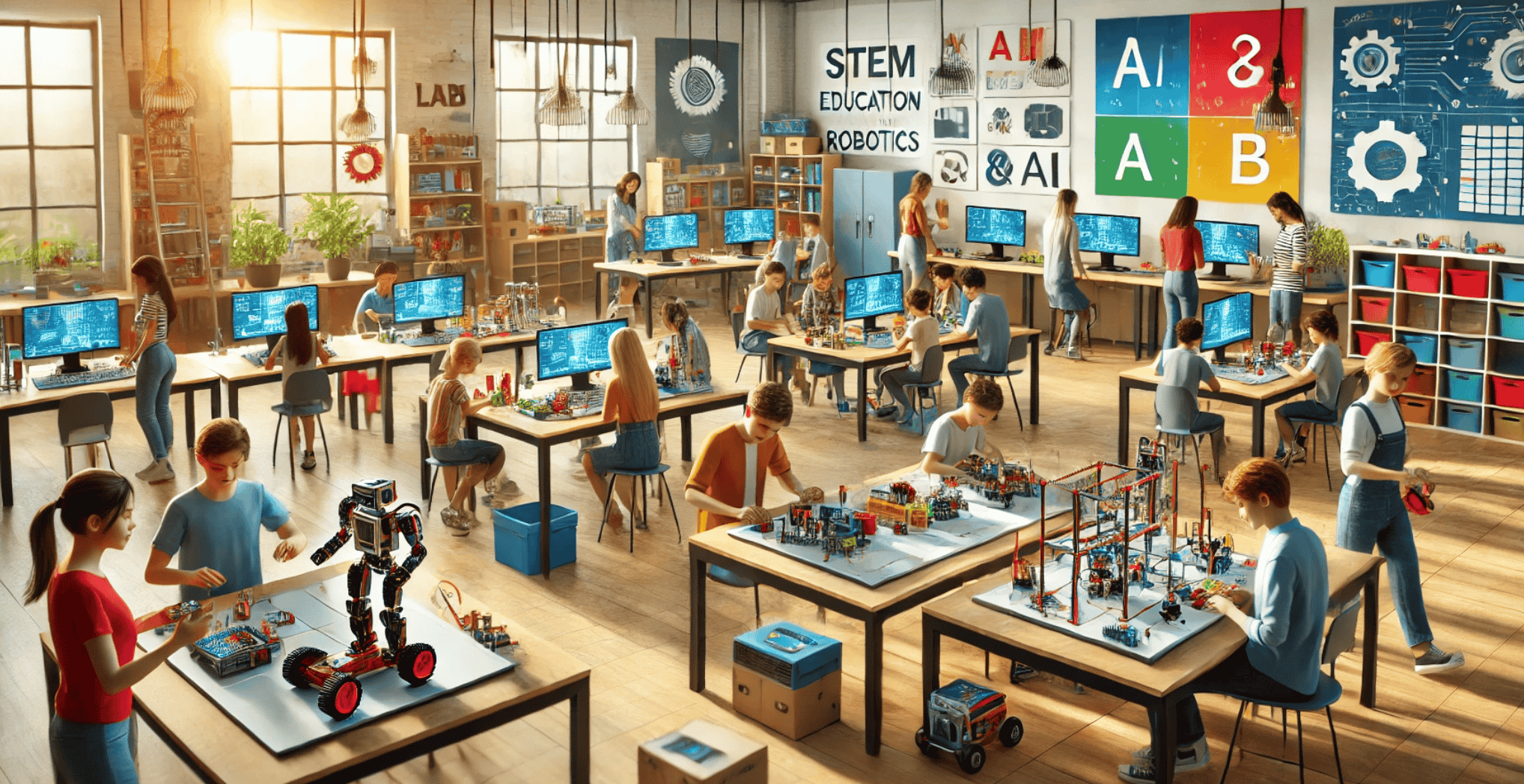
Establishing a Robotics Lab in Schools: A Complete Guide
In today’s fast-paced technological world, setting up a Robotics Lab for Schools is a transformative step toward equipping students with the tools to succeed in science, technology, engineering, and mathematics (STEM). A well-planned Robotics Lab Setup in School enhances learning by integrating hands-on experiences with theoretical knowledge, fostering creativity, critical thinking, and problem-solving abilities.
The Role of Robotics Labs in Education
1. Robotics Lab for School: Bridging the Gap Between Theory and Practice
A Robotics Lab combines STEM education with practical application, allowing students to explore robotics, automation, and artificial intelligence (AI) in real-world scenarios. These labs are designed to provide a robust foundation in technology and innovation, preparing students for future advancements.
2. STEM Lab: Encouraging Interdisciplinary Learning
A STEM Lab integrates disciplines like mathematics, science, and engineering with hands-on robotics projects. This approach ensures students are not only learning concepts but are also applying them in innovative ways, making learning meaningful and engaging.
3. AI & Robotics Lab: Preparing Students for the Future
The integration of artificial intelligence into robotics education creates an AI & Robotics Lab, where students delve into machine learning, automation, and IoT applications. These labs prepare students for the technology-driven careers of tomorrow by familiarizing them with cutting-edge tools and platforms.
Why Set Up a Robotics Lab in Indian Schools?
1. Robotics Lab in India: The Emerging Trend
India is rapidly embracing technological advancements, with Robotics Labs in Schools becoming a crucial part of the educational landscape. These labs align with the National Education Policy (NEP), emphasizing skill development and experiential learning.
2. Robotics for School Students in India: Hands-On Learning
By incorporating robotics into the curriculum, schools in India empower students to explore practical applications of technology. Such exposure enhances their problem-solving abilities, logical thinking, and collaboration skills.
3. AI Lab in School: Staying Ahead of the Curve
An AI Lab in School equips students with knowledge about artificial intelligence, ensuring they remain competitive in a global marketplace. Students learn to design smart solutions, create intelligent systems, and use data-driven tools to address real-world problems.
Steps for Robotics Lab Setup in Schools
1. Defining Objectives
- Determine the focus: Introductory robotics, advanced AI, or a combination of both.
- Decide the scope: Curricular integration, extracurricular clubs, or competition-ready projects.
2. Allocating Space
- A minimum of 700 square feet is recommended for a fully functional Robotics Lab.
- Ensure the space has adequate lighting, ventilation, internet connectivity, and electrical outlets.
3. Selecting Robotics Lab Equipment
A comprehensive Robotics Lab Equipment List includes:
- Robotics Kits:
- Beginner: LEGO Education WeDo 2.0, LEGO Mindstorms
- Intermediate: Arduino Kits, Raspberry Pi Kits
- Advanced: VEX Robotics Kits
- Computers & Software:
- Laptops or desktops with coding platforms such as Scratch, Python, Blockly, and Arduino IDE.
- Additional Tools:
- 3D printers for prototyping
- Sensors (e.g., ultrasonic, IR) and motors (e.g., servo, stepper)
- Safety equipment and storage solutions
4. Designing the Lab Layout
- Provide ergonomic furniture, collaborative workstations, and organized storage spaces.
- Ensure safety protocols with fire extinguishers, signage, and proper ventilation.
Developing a Robotics Curriculum
A structured and progressive Robotics Curriculum ensures that students build knowledge step by step:
- Beginner Level: Block-based coding and simple robot assembly for Grades 1–5.
- Intermediate Level: Arduino programming and sensor integration for Grades 6–8.
- Advanced Level: AI, IoT, and robotics competitions for Grades 9–12.
This approach helps students progressively deepen their understanding, from basic concepts to advanced applications.
Benefits of a Robotics Lab for School Students
- Practical Knowledge: Students apply theoretical concepts in real-world projects.
- Increased Engagement: Interactive robotics projects make learning exciting and meaningful.
- Future-Ready Skills: Early exposure to robotics and AI prepares students for careers in STEM fields.
- Enhanced Problem-Solving: Robotics encourages critical thinking and resilience.
- Teamwork: Collaborative projects promote communication and leadership.
Why Choose Junior Engineers Robotics for Your Robotics Lab Setup?
Comprehensive Solutions for Robotics Labs in India
Junior Engineers Robotics specializes in setting up Robotics Labs for Schools, ensuring a seamless experience with:
- Complete lab design and furnishing
- Electrical wiring and decoration
- Customizable STEM and AI curricula
- Ongoing teacher training and support
Budget-Friendly Options
Costs for setting up a Robotics Lab in Schools can range from ₹3 lakh to ₹6.5 lakh, depending on the scale and equipment. Junior Engineers Robotics offers tailored solutions to fit your budget.
The Future of STEM Education in India
The integration of Robotics Labs, STEM Robotics, and AI Labs in Schools is revolutionizing education. By investing in a Robotics Lab Setup in School, institutions not only enhance learning experiences but also prepare students to excel in a technology-driven world.
Take the first step today! Partner with Junior Engineers Robotics to transform your school into a hub of innovation and creativity.
If you’d like to set up a Robotics Lab for Schools or learn more about STEM Robotics and AI Lab solutions, feel free to reach out:
- Call Us: +91 9810088878
- Visit Our Website: www.juniorengineers.co.in
Partner with Junior Engineers Robotics to empower the next generation with cutting-edge education in robotics and STEM!








Leave a Comment